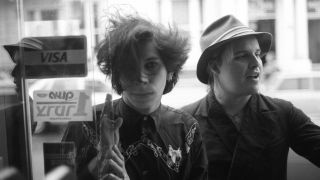“40 years. Lord, have mercy,” is Kid Congo Powers’ wry response to the length of his career.
Powers has been in bands since 1979. His first was The Creeping Ritual, which mutated into The Gun Club. His latest – and his main gig – is Kid Congo & The Pink Monkey Birds. They are out on tour this month. The Wolfmanhattan Project, one of Powers’ sidelines, have their first album out now.
Powers has also been in The Cramps, Nick Cave & The Bad Seeds, Congo Norvell, Knoxville Girls, Kid & Khan and The Fur Bible. He has also guested with an array of musicians: among them, Barry Adamson, Mark Eitzel, Die Haut and The Make-Up.
Powers turned 60 this year. “It’s great to be the Big 6-0,” he says. “Maybe at a young age it was a romantic notion to be dead at 30, but luckily I didn’t realise that romance. I threw that lover away.”
Powers has been spending a lot time reflecting: he has recently written his autobiography. “The working title was just going to be called ‘Kid’ because it was actually going to be a coming-of-age story, but then I realised I needed to get older and write about things people might actually be interested in.”
“In The Red Records is going to put it out. It’s their first publishing effort. I’m excited because I’ve been putting out records with them for over 10 years.”
The 12 records Powers has chosen for Louder cover each of his four decades as a musician. They indicate the enormous variety of his output. His picks span garage rock and minimalist Techno. “Sometimes it’s popular and in favour and has a spotlight on it,” he says of his work. “A lot of the time it goes into a dark cave. You need to try different things and accept that it’s not all going to be ‘right’ or rewarded.”
“Somehow, that doesn’t deter me. I think I’m still that very tenacious teenager I was. I’m an Aries – I’m going to ram through this whether you want me to or not.”
“Playing music is my sole source of engagement. It’s my food. I’ve been through plenty of disappointments, but I just keep working.”
Of all the records he’s made, Powers says, “It’s like having children; you love them all. Some are problems and some are good.
“These are all the good ones.”

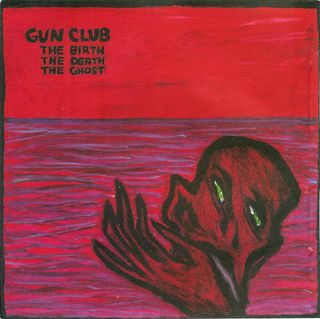
The Gun Club: The Birth, The Death and The Ghost (released 1989)
"We put that out as an artefact for archaeological reasons. This is an early version of the Gun Club, the pre-Fire of Love band, as low-fi as possible, just live bootleg cassette recordings. It was from a time of us discovering what we could be. This album was more of an idea than it was meant to be a great record.
"The version before the Gun Club – The Creeping Ritual – was all over the place, really skronky and messy and had reggae influences. It was super-arty and noisy, but it was the germ nucleus. It had all the influences and we were just trying to grasp at them. When Rob (Ritter) and Terry (Graham) joined, everything came into complete focus and it became a stronger band. It astonished me and Jeffrey (Lee Pierce), just as much as anyone who had seen us before.
"Jeffrey would regularly bait the audience. That’s left off the album but that was Jeffrey’s thing. His whole persona from the beginning was to be really provocative and to get a reaction out of people, whatever that might be, usually their ire. It was audience participation.
"Later in the Gun Club, around the time of The Las Vegas Story, Billy Idol asked us to play at the height of his American White Wedding’/’Rebel Yell fame, when his whole audience was a lot of teenyboppers and secretaries – the MTV Generation Mk1. This was at the Long Beach Arena. The audience hated us. The more they booed, the more amazing Jeffrey was."
"We were at the height of our powers, so we were like, 'If you are going to boo us, we’re going to really give you something to boo about'. So we started Death Party which is like this non-stop feedback and screaming. People were pelting us with so much ephemera – plastic bottles and trash – until finally the stage-hands threw us off the stage.
"I think Suicide or Alan Vega solo played another night and got exactly the same treatment. So Billy Idol had very good taste in music, but I don’t think his audience shared it."
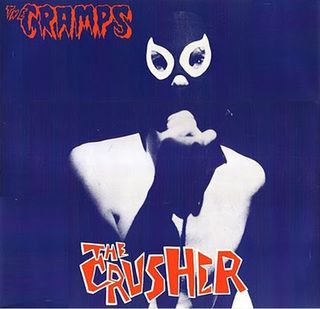
The Cramps: The Crusher (12” single, 1981)
"The sound on this is incredible. This is The Cramps’ record I feel like I made the most contribution to. I first heard The Crusher [by Minneapolis garage band The Novas] on The Dr. Demento Show on the radio in LA. I found it on a compilation record in London and Lux (Interior) was like, 'Let’s play that song – tonight.' We didn’t do a rehearsal or anything. The second time we ever played it was when we recorded it, the next month or so.
"New Kind of Kick on the B-side has one of my favourite guitar solos I’ve made. How I got that sound is pretty amazing: I was doing it and Ivy was manipulating the speed on the tremolo. On Save It, I was trying my best to do the opposite of what you might expect for a wild rockabilly solo. I was trying to make it sound like it was slowed down and backwards. It sounds like beautiful music to me – like a dying whale."
"The Cramps were fully formed long before I joined them. I saw them in 1978 in New York. I’d taken a Greyhound bus from LA and the first thing people said was, 'You have to go see The Cramps. That is the band.' My jaw dropped on the floor. It was the perfect rock band for me. The vision was all there. You immediately understood what it was, as baffling as it was. It was such a collision of different things you love but would never think of together: rockabilly music, Horror, B culture and this nihilistic attitude just coming out of the eyes. To see it all together, all these things just blew up the room; rooms erupted. CBGBs was full of screaming people.
"Lux was incredibly provocative, baiting the audience, but with more finesse than Jeffrey did. The Cramps influenced the Gun Club theatrically, as well as musically. They were one of those bands like the Ramones, which created an entire world immediately upon first look or the first song you heard. You were immediately drawn into this world.
"When I joined, I already worshipped The Cramps. I was a friend of Bryan Gregory’s. Those were some pretty tall heels to slide yourself into, but I was young and tenacious. They were a sexy band and I was really into the androgynous look; Bryan’s look and personality and character were incredibly testosterone, terrifyingly male, but also very feminine at the same time. I took this to heart. That was an adjustment I had to make.
"To assimilate into The Cramps, I also had to learn to use a fuzz pedal. I don’t think I used any kind of pedal in the Gun Club, not even a distortion pedal. I just turned my amp louder. And I had to learn to play in front of more than 10 people. At that time, the Gun Club’s audience was friends and other bands and that was it."

Die Haut: Headless Body In Topless Bar (1988)
"Playing with Nick Cave and The Bad Seeds got me to Berlin. One of the first things that happened was to be in the Wim Wenders’ film Wings Of Desire with The Bad Seeds. Berlin was exciting.
"There was less pop culture pressure than in London. In London, you were hyper-aware of the latest flavour that was going on. I’m a very gullible person. I paid really too much attention to it and it would seep in. It somehow bothered me. Berlin seemed more artistically centred. It seemed that a lot more of the arts met more closely, like film and music, or dance and film, or performance art and rock’n’roll, because West Berlin was smaller and more isolated. It seemed very happening and artistically fertile. There were great experimental things going on. I also think I wanted to go somewhere, where I didn’t know the language."
"I was also fleeing the Goth wave that was taking over the UK. The Batcave got me - just for a moment. It was not the intention to be in a Goth band. I thought The Fur Bible was more Swans or The Scientists or Foetus. The look got a little out of hand: the black hair and white make-up and Patricia (Morrison) - who pre-dated Goth - having her Vampira-influenced look. I think I was feeling the pressure to present some kind of image, which is unlike me. I don’t know where this insecurity came from."
"Die Haut were interested in someone to sing who wasn’t a singer. This was when I think I started to find my voice. In The Fur Bible, I felt I didn’t find my voice. Those songs with Die Haut (You Seen Angel Jésus and My Gift To You) were very satisfying and I loved working with this band a lot. I was very nervous, but luckily they were a band that liked to rehearse a lot. I had 100% carte blanche. They gave me a track and said, 'We had someone else singing on this and they sang it like it was Satisfaction.' I said, 'Well, I don’t think I can sing it like Satisfaction. The music is so exciting, what you need more is a narrator.' They were very much into that. They let me write whatever lyrics I wanted. It was good for me to exercise my lyric writing.
"One thing I take with me from my time in Berlin is that you don’t have to stick to one genre. It’s worth taking all these chances of playing all these different kinds of music. It’s all part of your cultivation. It was a very inspirational time: it was ideas on top of ideas."
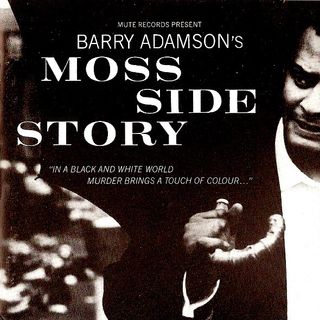
Barry Adamson: Moss Side Story
"I’m in the “Freedom Choir” (along with Mick Harvey and Anita Lane) on two tracks, Suck On The Honey Of Love and Free at Last. Any piece of any record is part of the whole. That album is incredible. That was Barry’s first attempt at a soundtrack-style album and what an amazing success it is. I’ve very proud that he asked me to be on it.
"I was a fan of Magazine and I’d known Barry for a while. Actually, I joined The Bad Seeds because Barry had left the band and Mick Harvey was going to move over to bass guitar and they needed a second guitarist. I was basically filling in when Barry’s slot was vacated. I got shoo-ed in for the Her Funeral My Trial tour.
"Barry and I remained friendly, so when Barry asked us to come down to the studio, of course we wanted to do it. I also appear in two Barry Adamson videos. In The Man With The Golden Arm, I’m playing cards in a nightclub; and in Busted off The Negro Inside Me, I play a very sleazy character carrying a briefcase."
"Barry was part of that London community I was part of. Anni Hogan, Marc Almond, Dave Ball, Jim Thirlwell, Nick Cave – that was our party and it’s been an enduring party."
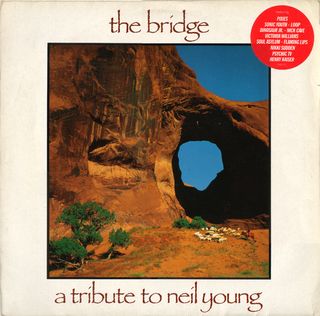
Nick Cave: ‘Helpless’ (From The Bridge: A Tribute to Neil Young, 1989)
"I really wanted to get this track in. It’s a beauty, a real beauty. It’s not well known and I’m very proud of it. Helpless is a beautiful Neil Young song that needed to be treated in a respectful and tender way and resist the impulse to trash it.
"It was me, Nick and Mick Harvey and Bronwyn Adams from Crime & the City Solution playing viola. Is Thomas (Wydler) from The Bad Seeds playing drums on it? I can’t remember. The slide guitar is me."
"Nick’s desire to adapt it was a step in the direction, I think, towards The Good Son. Kicking Against The Pricks had already hinted at where Nick’s musical taste lies. That’s one of the great things about Nick and Mick Harvey: they loved many different kinds of music and what people would call schmaltzy or kitsch, I don’t think Nick and Mick ever saw it that way.
"There’s something about Helpless that resonates with me. I listen to it and think, 'Well done!' I hardly ever think that. In this case, I’ll make an exception and pat myself on the back."
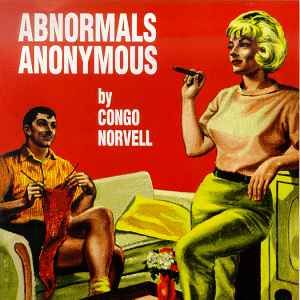
Congo Norvell: Abnormals Anonymous (1997)
"Congo Norvell started in Los Angeles after I left The Bad Seeds after The Good Son. I was at loose ends and a friend of mine said, 'Oh, you need to meet this woman. Her name is Sally Norvell. She’s an amazing singer and you have something in common, she was in a Wim Wenders movie too.' When Nastassja Kinski is working in a peep-show in that film and Harry Dean Stanton goes into the wrong room to find her, there’s this naughty nurse. The naughty nurse is Sally Norvell."
"I went to see Sally singing jazz standards. She sang a version of Every Time We Say Goodbye that was completely devastating. So we started Congo Norvell. The AIDS crisis was in full swing and the second wave in the early 90s was hitting the artistic community; it wasn’t just restricted to the gay community. We got very involved in activism. There was the LA chapter of ACT UP. So we contributed through music, by playing benefits. So the band was born out of that.
"We had some success and got signed to Priority Records, NWA’s label. They wanted to have an alternative branch. They gave us a big budget and we made an incredible album, which we put every ounce into. The promo copies got amazing reviews and suddenly the record label said, 'We’re not putting this out.' We had signed such a terrible deal. 'Can’t we buy it off you?' 'No, no, no, no, no.' What a bunch of LA Hollywood asshole lawyer bullshit, music business fuck-up that was. So Sally and I said, 'That’s it, we’re leaving. We’ll move to New York and make another record.' And that’s what we did. And that record was Abnormals Anonymous. So there’s a lot of energy behind it."
"Mark Eitzel was living in New York for a while then too. We were slightly dating. It was one of those things like, 'We’re friends. We’re both gay men. We’re both musicians. We should be together.' But we were much better as friends. But he came down to sing on one song but sang on several.
“Abnormals Anonymous is noir-ish rock, I guess. David Lynch: there’s some tracks for you here, waiting. First and foremost, Sally is a torch singer with a very powerful voice. We were very into melodrama. Our references were films more than music – Douglas Sirk films.
"This is a record that has flown under the radar. I’m going to use my book to try to generate some kind of interest, so I can have a reason to play it out live."
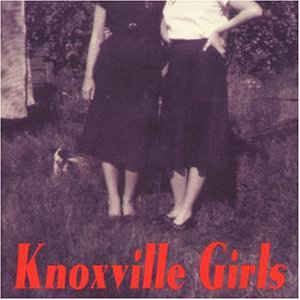
Knoxville Girls: Knoxville Girls (1999)
"Knoxville Girls was already something quite formed before I got into it. It was supposed to be [the Honeymoon Killers'] Jerry Teel's country rock band. He had Bob Bert [Sonic Youth] and Jack Martin [Honeymoon Killers, Bottleneck Drag] in. Knoxville Girls came out of a very specific scene because Jerry ran The Funhouse recording studio on East 4th St in the East Village. Jon Spencer recorded there, early Yeah Yeah Yeahs, even Patti Smith did a song there.
"After I moved to New York, I ended up living with Jerry who had a 6th floor walk-up above the studio. So they asked me, 'Do you want to come downstairs and play on a track on this record?' I played some crazy rhythm guitar and I ended up playing on the whole record.
"Especially with garage-y, noisy tracks, there’s work that goes into them but it’s really alchemy, chemistry, a lot of spontaneity. I loved the sound of Knoxville Girls – crazily tinny. It’s a strange-sounding record; it’s rock’n’roll but off-kilter, very New York."
"There was a lot going on in New York before The Strokes and The Yeah Yeah Yeahs. I don’t think there was ever a lull. I think that’s a construct of an industry, rather than a reality. There were a lot of bands, a lot of music going on, every night of the week. Speedball Baby. Jon Spencer. Railroad Jerk. Pavement. Swans were still around. Lydia Lunch was still a force. At that time Chan Marshall was going on in Max Fish and around and there was a young band Jonathan Fire*Eater.
"The East Village then was on the turn, becoming gentrified. I first went there in the late ‘70s and that was scary. The Bowery was actually less scary, that was mostly drunks, but New York was a dangerous place then. By the late ‘90s, not so much, but it was still pretty crappy and scummy, but we were poor.
"I still think New York is scummy now, just expensive. I go to the East Village: 'Are people really paying these prices and there are still all these potholes and there are still rats running around? What is wrong with you?'”
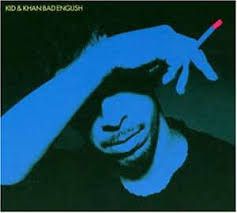
Kid and Khan: Bad English (2004)
"Kid and Khan is East Village music as much as Knoxville Girls, just taking a different form. Khan is part-German, part-Turkish, part-Finnish and he was living in New York. He had a minimal Techno record store called Temple Records NYC. On Avenue C, I believe. These minimal Techno records were the garage rock of Techno.
"He was making a record and came to see an early version of The Pink Monkey Birds or some solo thing I did. He asked me to sing a song on his record, which was called No Comprendo, which had a series of singers, including me and Andre Williams, Julee Cruise and Hanin Elias from Atari Teenage Riot and Françoise Cactus from Stereo Total. I ended up going on tour with him and Julee and we even did some of the Twin Peaks songs, which was incredible for me because I was a huge fan."
"Khan was great. At a time when Techno was quite straight-faced and the minimalism was going very cold, he was doing crazy performances. He stripped down to his underwear, crawling around – he was like the Lux Interior of Techno. He was engaging, hilarious and refreshing and it made Techno have soul and art. He put a face to it and a personality.
"He was a big fan of The Cramps and we were thinking, 'What if the Cramps were a Techno band? What would it be?' That was our concept for making Kid and Khan. We really liked to be provocative because bringing a guitar into a Techno club was like bringing Satan. We loved the idea that people would be so upset that he was playing music with an electric guitar player. So we had this show and we made this album."
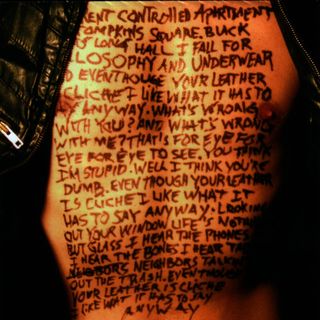
Kid Congo & The Pink Monkey Birds: Philosophy and Underwear (2005)
"The first Pink Monkey Birds record we made in a week. It was certainly a culmination of all those things on this list. For example, we had an electronics person - Jorge Velez - who became a really well known Italo-Disco artist called Professor Genius. I gave him his first job. He was our Eno in our Roxy Music.
"I already knew Jack Martin, the skronky guitar player from Knoxville Girls. On this album he sounds like Robert Quine in The Voidoids, which is a good thing but maybe we overdid it – our hero worship went a little overboard. Philosophy and Underwear is definitely a New York skronky statement.
"The intention was to take a lot of influence from Lou Reed’s solo records. The lyric about a 'rent controlled apartment off Tompkins Square' in Even Though Your Leather Is Cliché is a reference to Sally Can’t Dance: 'She lives on St Mark’s place in a rent controlled apartment - $80 a month/She had a lots of fun.' That kind of stuff and Coney Island Baby was what I was listening to as a teenager and always loved. Moving from LA to New York was a teenage fantasy that became a reality."
"There’s a lot of humour and absurdity on this record: 'What rhymes with ‘cuisine’? What rhymes with ‘cuisne’? Hmm, I know: ‘Ben Vereen!’ But it’s a really nice image, making it into a magazine article: 'Your eyes turn over like scenes/ The pages in a magazine/ ‘Faces of Ben Vereen’/ ‘The History of French Cuisine’.
That song was used as the theme song for a French television show called Kaboul Kitchen. It’s a dark, absurd comedy about a French soldier who starts a nightclub restaurant in war-torn Kabul."
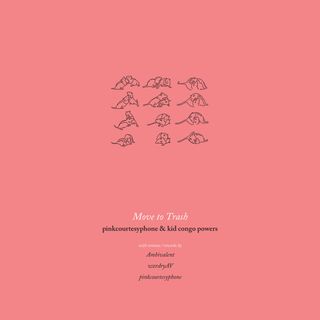
Pinkcourtesyphone & Kid Congo Powers: Move To Trash EP (2015)
"When I lived in Washington DC I befriended this great contemporary artist named Richard Chartier. He did a performance in DC at the Hirschhorn museum, the contemporary art museum. In the Smithsonian archive he had found a collection of tuning forks throughout he ages and he recorded all of them and then he made music out of them, a quite incredible bath of sound.
"He has an alter ego of pinkcourtesyphone which is his ‘pop’ music endeavour. I love what he does - a sort of ambient music. He’s in a very specific line of work but with a very big audience. He has his own label called LINE Records. He puts out other artists like Cosi Fanni Tutti."
"We bonded over being fans of Amanda Lear. So we made a version of the Amanda Lear song, I Am A Photograph. I think all the music I make and all the reasons I do things is because of the person or the people – that’s how I end up making music because we like each other and because of a certain aesthetic. I’m not thinking about reputation or genre."
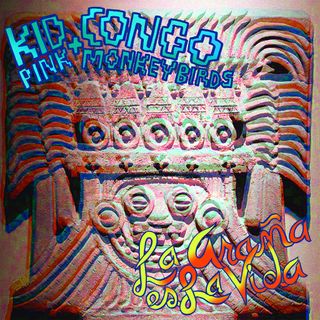
Kid Congo & The Pink Monkey Birds: La Araña Es La Vida (2016)
"We were doing a tour for Philosophy and Underwear and that band imploded and I just started on a whole new track. Someone put me in touch with Kiki (Solis) and Ron (Miller). After five minutes playing together, we made a song up out of nowhere. Amazing.
"The alchemy of people’s styles has continued. They are very in tune with my desires and they made me aware of their desires and I think that culminates with the last album, La Araña Es La Vida. I’m so pleased how well it hangs together, even though it came from very different sources.
"We couldn’t not live further away from each other: I live in Tucson, Arizona; Mark (Cisneros) lives in Washington DC; Kiki lives in St Louis, Missouri, and Ron lives in Lawrence, Kansas. We’re not in each other’s day-to-day lives, but we are so connected when we do get together to play music. We do send iPhone memos. There are ghostly ideas floating around and beats and directions."
"Sometimes when things start to feel pigeonhole-y I want us to run in the opposite direction and they rein me in: 'This Chicano rock thing you’re mining, it’s so great blah, blah, blah.' Everyone brought something to La Araña Es La Vida, it’s like our Beatles record, our White Album.
"I brought in the idea of doing The Psychedelic Furs cover. I love the lyrics to We Love You. I sing with conviction. It’s another great song in the rock n roll canon about rock n roll. It was amazing that Mark was able to approximate the saxophone solo on guitar."
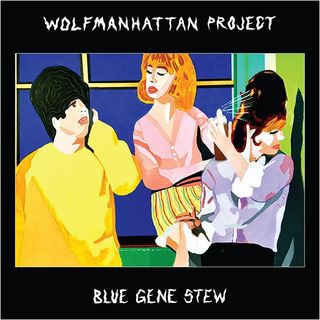
The Wolfmanhattan Project: Blue Gene Stew (2019)
"I met Mick Collins some years ago at SXSW. I admired his work with The Gories and The Dirtbombs. Again, we liked each other and each other’s work, so we thought, 'Let’s do something.' We got Bob Bert in on it, who’s a mutual friend of ours. Larry Hardy (owner of In The Red Records) really wanted it to happen. He was a catalyst as well.
"We did several sessions. We had some songs that we thought Larry would like us to do. So we said, 'Let’s do some songs that just we want to do.' Mick Collins is not one to pander – nor are any of us. We recorded a ton of stuff and threw out a lot – some of it went a little too far into jamland. 'No jamming! Improvisation – yes. But no jamming. No Blues jam!'"
“Blue Gene Stew was enjoyable. It turned out great – a weird record. Our concept was two baritone guitars, but none of us owned one. There was one in the studio. It’s a deeper guitar with a longer neck. I have no idea how to work one, so just made it all up. We figured out you could play it both ways: on some of the songs like ‘Now Now Now’ I play it like a bass and on some of the songs I play it like a regular guitar with chords. There did end up being actual guitar on the record too.
"Lydia Lunch is on the album also. Mick, Bob and me are great lovers of postpunk New York – ESG, Liquid Liquid. There were No Wave ideas flying around. We were letting our freak flag fly. My favourite song is the lead track (‘Delay Is The Deadliest’) that Bob sings. Bob is a great singer I don’t know why he doesn’t do it more often. I saw him sing at a Cramps tribute – he sang Shadazz by Suicide. So good."
Kid Congo Powers & The Pink Monkey Birds are on tour. Dates can be found on his website. The Wolfmanhattan Project album Blue Gene Stew is available from In The Red Records. Kid Congo Powers’ forthcoming autobiography will be published by via In The Red Records.
